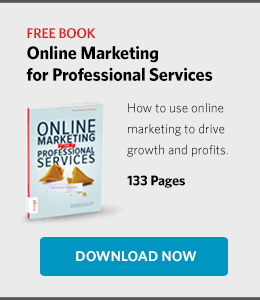Don’t you hate the sight of a webpage stuffed with 27 Call-to-action (CTA) buttons?
Don’t you get irked when you want to see a CTA, but have to squint through the email/webpage to find it? Even worse, you cannot find it at all!
Don’t you hate it when the CTA interferes with what you’re doing on the page?
Don’t you hate it when the CTA keeps popping up with messages that have nothing to do with what you are looking for?
I bet we’ve all been there. It’s important for you as a marketer to ensure that your CTAs are appropriate and serve the purpose they were meant to serve. No more. No less.
There are a lot of choices to make when thinking about your CTA. Should it be at the top, or at the bottom, in red, or in blue, huge, small, pop-up, argh! How are you supposed to know what the right way is with so many choices?

Long before we understood the importance of strategy in CTAs, we at Hiver learned some lessons of our own. For example, our static ‘Subscribe’ button on our blog used to appear a little too far down the page. The customers had to scroll down to the bottom of the article to see it. We decided to make it a slide-in – it appears after you have spent a minute on the page. Result – our subscribers-per-visit increased by 20%.
To lend some sanity to the overarching brouhaha around CTAs, here are 3 angles you should consider.
Psychology
Think from the user’s perspective. Think of the psychological effect that every word will have on your audience.
Aim for clarity. Sometimes I get emails with so many CTAs that I am just lost and confused. You cannot have ten ‘click here’ buttons when your aim is to get your customers to click one very important hyperlink among all the ten. This CTA overload can sabotage the real goal.
One way to avoid this is to cut out irrelevant CTAs. You cannot have haphazard CTAs appearing at random spots. If I’m reading about flood victims, I’d like to donate to the cause, and not read your article about Bambie. Judiciously pick the number of CTAs per page, and make them count!
Get your words right. If you use the words ‘Grab Your Free Stuff” in a CTA targeted to the C-suite, they may not find it very attractive. Instead, use words that are appropriate to your audience. For instance, “Download Your Executive Report” is more likely to inspire trust and confidence — and generate higher conversions.
Stop being mysterious. Most CTAs don’t work well with an element of mystery; it is better to succinctly tell your customers what benefits they will receive, if they click on the button.
Do not play click-bait. Who doesn’t want instant gratification, eh? Let’s say your CTA says – if you click here you will get X; make sure that they instantly land on the page to get it. Do not take them on a roundabout journey, as that will make them more likely to press the ‘Cancel’ button.
Give them a special reason to click. Make bonus offers. Along with the regular CTA offer, you can give them an additional bonus offer tied to a time limit. For example, ‘subscribe in the next hour to get a surprise gift’.
SEE ALSO: The Science Behind the Art of the Call-to-Action: Part 1
Appeal
Look aesthetic, look classy; do not play cheap. Do not look desperate for attention.
Don’t be a siren. Do not overwhelm your audience. Remember those annoying blinking ‘BUY NOW’ buttons or that ‘FREE’ button with a loud ding? That’s the digital version of trying to force your audience. Keep it neat. Keep it simple and most of all, keep it annoyance-free.
Don’t be a banner ad. Physical appeal is very important. Use good colors and using bold font choices can help as well. Just large and loud enough for your audience to notice, but not enough to make the page look horrendous. Remember we want action-worthy pages, not cringe-worthy!
Be creative. Do use creativity in creating hooks for your CTA. For example, “Download the Kit (Make a Kaboodle)” is a CTA I wouldn’t easily neglect. Additionally, if you can use sass and humor, be our guest. Just be sure you don’t sacrifice clarity for cleverness.
Strategy
Think of the end goal before you design your CTA. Anything you do should be in line with the end goal, and not because yellow is your favorite color.
Appear at the right time. Choosing the right time for your CTA to appear is very important. You want your audience to be neither too familiar nor too unfamiliar with you, before your CTA appears. A possible solution for this are slide-in or pop-up CTAs, which appear on the page after the customer spends a minute or so on that particular page.
Remember your users’ needs. A targeted CTA is just as important as targeted marketing. What I mean is, it is important to identify the users and their needs, and to appeal to those needs through your CTA. Get an idea of what customers are looking for using analytics, and try to show a solution for your customer through your CTA. Do that, and they cannot resist but click.
Time bound offers. The best bait is putting a limited time offer. A lot of times, even though your audience may be interested in your product/service, they might put if off for later and totally forget about it, or change their mind in this time gap. To avoid that, put a time limit or an expiration date on your CTA – this will urge them to take action now.
Make it sticky. Make your offer several times. The CTA must be visible to the customer for as long as they are spending time on your website. You can do this by putting the CTA on different pages, or by integrating it in the menu/side bar. This way your CTA gets high visibility.
Place it right. Usually, CTAs should be placed at the top or the middle of the page. If you put it at the bottom, or to the extreme right, chances are your customer may have to scroll the page, and that makes it more likely for them to miss it.
Most marketers seem to want to spend all their time in creating a beautiful web page and fill it with great content, but it is just as important to create an attractive call-to action and strategically leverage its impact to produce conversion rates.
Additional Resources
- Learn about the most effective online marketing strategies to generate leads in our Online Marketing for Professional Services book.
- Download a free copy of our SEO Guide for Professional Services to create an SEO plan to make your firm easily found online.
- Our Lead Generating Website Guide details how your firm can generate qualified leads with its website.
How Hinge Can Help
Hinge has developed a comprehensive plan, The Visible Firm℠ to address these issues and more. It is the leading marketing program for delivering greater visibility, growth, and profits. This customized program will identify the most practical offline and online marketing tools your firm will need to gain new clients and reach new heights.


